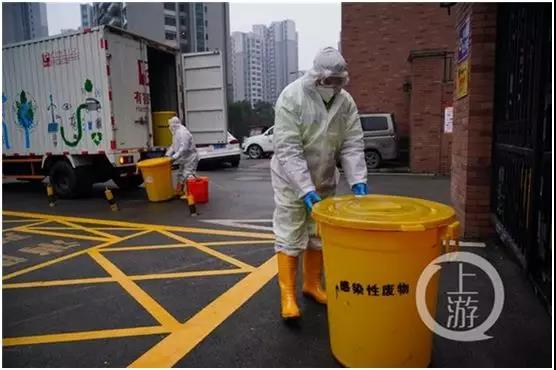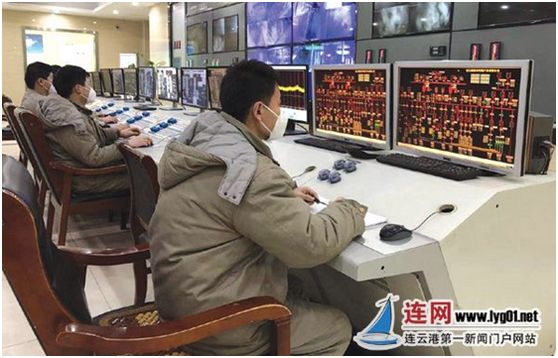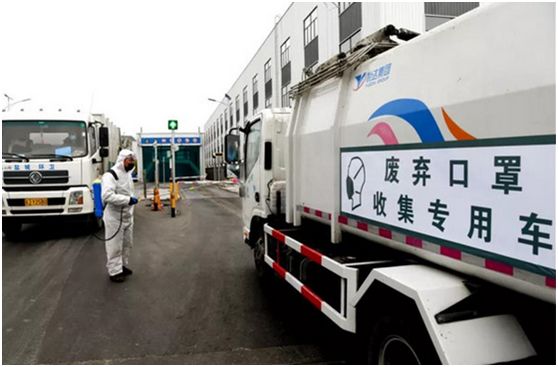
- BY:Engineering Department
Since the outbreak of the epidemic, the amount of medical waste generated has doubled. In order to prevent medical waste from becoming a source of secondary pollution, various provincial and municipal government departments have introduced medical waste collection, transfer and disposal plans, requiring medical waste, especially epidemic medical waste, to be collected and transported in a timely manner, and medical waste generating units and disposal units must do a good job of source control to prevent cross-infection. , To ensure "Nissan Nissin".
According to public data, as of 2018, all provinces (autonomous regions and municipalities) across the country have issued a total of 407 hazardous waste business licenses for the disposal of medical waste (383 for separate medical waste disposal facilities, and 24 for simultaneous disposal of hazardous waste and medical waste. Facilities), each prefecture-level city (state, league) has at least one medical waste disposal agency. In the face of the sudden epidemic, medical waste disposal units from all over the country quickly joined the battle for epidemic prevention and control.
However, in areas where the epidemic is more severe, the capacity of medical waste disposal units is insufficient, and the pressure on disposal has increased, and the problem has become prominent.
According to reports, the main technology of the domestic waste incinerator and the medical waste incinerator are the same, and the working conditions are similar. The temperature in the furnace of the domestic waste incinerator should be ≥850°C, and the residence time of domestic waste in the furnace is generally 1 to 1.5 hours (grate furnace). Under this incineration condition, the new coronavirus can be completely inactivated. It is feasible to use domestic waste incineration facilities to dispose of medical waste under the condition of controlling the proportion of mixed combustion and doing a good job in health protection. The waste incineration power plant quickly started the "replacement" mode to undertake part of the medical waste treatment and disposal work.
So, how is the epidemic prevention and control of waste incineration power plants in various places carried out?
Chongqing Third Waste Incineration Power Plant
During the epidemic prevention and control period, since January 24 (Lunar New Year's Eve), as of February 9, the company has incinerated 61,566 tons of domestic waste. Domestic waste incineration is one of the best ways to eliminate sources of infection and block transmission. Waste incineration power plants receive more than 2,000 tons of domestic waste from various main urban areas of Chongqing every day. Employees must be "fully armed" to guard against the epidemic. Control the last line of defense.

Zhejiang: Hangzhou Jiufeng Waste Incineration Power Plant
The Hangzhou Jiufeng Waste Incineration Power Generation Project strictly implements the "epidemic" policy of the series of wars in Zhejiang and Hangzhou, and quickly established a new crown virus pneumonia response work leadership group, formulated and implemented the "new coronavirus outbreak response plan", and put all kinds of joint prevention and control and epidemic prevention. The measures are implemented.
In order to dispose of domestic waste and ensure the stable operation of the city, many operators choose to stick to the production line. "In the factory, from the gate to the unloading platform, from the leachate station to the staff dormitory, each key area must be disinfected at a fixed point." "Temperature testing is carried out at a fixed point every day to prevent and control the epidemic." "Strict implementation. The closed management measures of the whole plant and the requirements of house isolation are to minimize the hidden dangers.” “The canteen adopts disposable lunch box dining management, and employees go back to the dormitory or office to eat separately to reduce the risk of gathering.” ... The epidemic prevention measures are intensively implemented and become The most important "fuse" in the battle against "epidemic".
Jiangsu: Lianyungang Municipal Solid Waste Incineration Power Plant
Garbage trucks entering the incineration plant must first go through the process of disinfection. In addition to disinfecting vehicles, sanitation personnel are also "fully armed."
In order to reduce pollution, the staff adopted special methods for disposal of virus-carrying garbage such as discarded masks used by citizens. General household waste undergoes fermentation for a certain period of time before being incinerated. However, for the destruction of anti-epidemic items such as masks, we adopt a separate trash warehouse operation, which is directly burned in the furnace and does not enter the sorting system, so as to prevent secondary pollution caused by discarded masks. .

Jiangsu: Waste Incineration Power Generation Project in Yancheng Venous Industrial Park
Although the amount of waste masks collected is small, it is quite cumbersome and strict. The waste masks are cleaned and transported by the sanitation departments at all levels, and they are directly transported to the garbage incineration power plant in the vein industrial park for incineration. , Mixed transportation, the garbage cans, garbage bags, and trucks must be disinfected many times during the process; the dedicated transportation vehicles must be airtight to prevent spills and omissions. After the dedicated transportation vehicles are discharged in the incineration plant, they can leave the factory after the elimination is completed. operation.
The collected waste masks are transported to waste incineration power plants for harmless incineration treatment. "General household garbage must undergo a certain period of fermentation before being incinerated. After disinfection, waste masks are unloaded to a designated area and burned directly in the furnace without mixing with other garbage. Try to prevent the waste masks from causing secondary pollution.

Shandong: Pingdu Municipal Solid Waste Incineration Power Plant
The focus of the epidemic prevention and control of garbage incineration is on the fast and efficient disposal of garbage after entering the site, especially the treatment of domestic garbage in the epidemic area and the People's Hospital of Pingdu City.
After receiving the notice, the company immediately arranged for on-site commanders to control the whole process; firstly coordinate the garbage transfer trucks. The garbage transfer trucks in epidemic areas and hospitals should enter the plant first for incineration, and increase the killing effort when entering and leaving the plant, and follow the walking track at the same time. The whole process of disinfection work; after the domestic waste in the epidemic area and hospital is put into the warehouse, it will be mixed with the garbage in the feeding area in a ratio of 1:2 and then immediately put into the furnace for incineration; after the garbage is put into the warehouse, the on-site operation control personnel will conduct comprehensive disinfection.
Guizhou: Anshun Municipal Solid Waste Incineration Power Generation Project
The second phase of the Anshun Municipal Solid Waste Incineration Power Generation Project, which was newly completed on January 19, is now "showing its skills" and "fighting side by side" with the first phase in the prevention and control of the new crown pneumonia epidemic. In order to effectively carry out the new crown virus epidemic prevention work, the company established an epidemic prevention and control leading group to carry out specific epidemic prevention and control in accordance with organized, planned and targeted requirements. Under the condition of taking preventive measures and ensuring safety, workers should be organized into production in an orderly manner. At present, the company has made full use of its horsepower and tried its best to deal with the garbage of the day.
Guangdong: Shenzhen Nanshan Energy Ecological Park
In the early stage of the epidemic, Nanshan Energy Ecological Park quickly established the "New Coronavirus Infection Pneumonia Epidemic Prevention and Control Working Group", and the factory area was strictly controlled, requiring all personnel in the entire area to wear masks at all times to reduce the possibility of infection.
The Nanshan Energy Ecological Ecological Park Epidemic Prevention and Control Working Group contacted professional killing units as soon as possible, and carried out all-round disinfection work on the factory area twice a day, especially the canteen, central control room, elevator, garbage discharge platform and office building, etc. In crowded areas, set up designated mask collection boxes to centrally and compliantly dispose of used masks.
Anhui: Mengcheng County Waste Incineration Power Plant
In order to fully cooperate with the epidemic prevention and control work, the waste-to-energy plant is fully staffed and operating at full capacity to ensure that it is burned out every day. For villages, communities and residents under the key control of the epidemic, set up sorted garbage bins, arrange dedicated vehicles to collect epidemic prevention wastes, and promptly dispose of them through incineration power boilers to effectively classify and quickly dispose of garbage to prevent the second spread of the epidemic.
Fujian: Putian Municipal Solid Waste Incineration Power Plant
Putian City's municipal solid waste incineration power plant, emergency treatment of Putian City's household waste involved in the epidemic during the epidemic, including the city's 5 designated hospitals, the first batch of 8 isolation observation points generated household waste, etc. The domestic waste incineration capacity of Putian Shengyuan Environmental Power Co., Ltd. is 2850 tons/day, and the mixed incineration of medical waste is 5%. The emergency treatment capacity of medical waste is 142.5 tons/day.
Jiangsu: Suzhou Waste Incineration Power Plant
Every day at 2 o'clock in the afternoon, it is the time for the sensitive waste during the epidemic prevention period to be transported into the waste incineration treatment plant: the staff responsible for disinfection will spray and disinfect the vehicles as soon as possible; the garbage crane operators will start unloading and put the waste into incineration; The staff is responsible for cleaning up scattered garbage, and performing secondary disinfection of vehicles, ground, and cleaning tools...a series of strictest disposal standards for operations.
The domestic garbage from designated hospitals sometimes mixes with discarded protective masks and protective clothing and other harmful garbage. It must be strictly and effectively treated in a harmless manner to cut off the channels for the second spread of the virus.
...
During the epidemic, waste incineration power plants were also busy, sharing the task of medical waste disposal, and building the last line of defense in the battle against the epidemic!
Reprinted: Polaris Solid Waste Network


